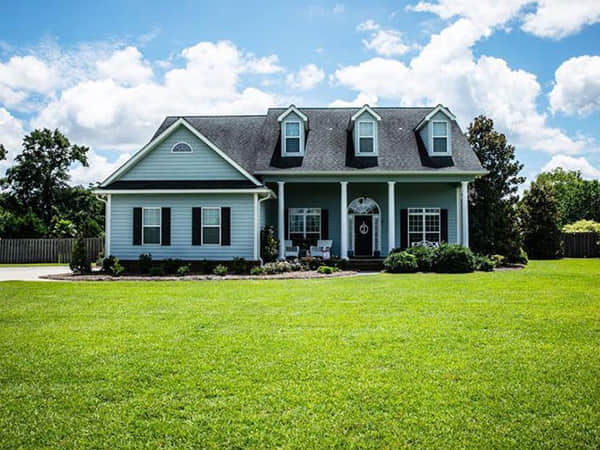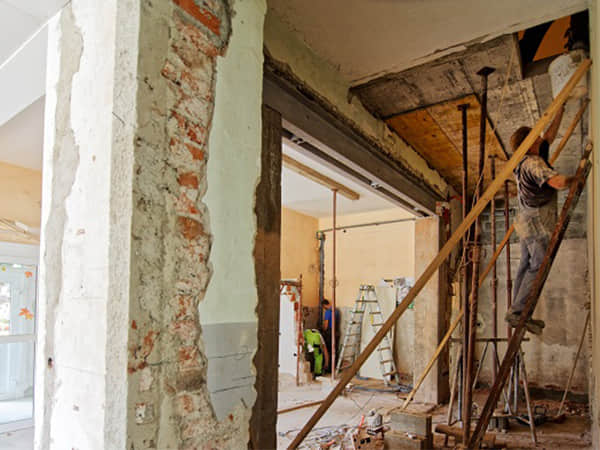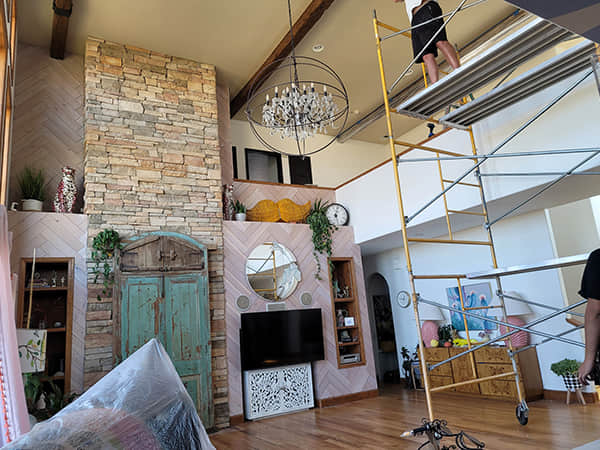Scaffolding is an incredibly important tool for the installation of a home, whether it is new construction, an addition, or renovating. It is an important safety tool for working at height or making modifications at difficult-to-reach locations. There's the possibility that the homeowner or small contractor has limited knowledge of the scaffolding, their uses, types and safety considerations.
In this text, we'll introduce some of the more common types of scaffolding, try to help you understand which type might be appropriate for your project, and talk about our thoughts on critical points to keep in mind when selecting, buying, or using one. We will also give some examples and some numbers to support these references to common applications of the scaffolding.
Ringlock scaffolding | Quicklock scaffolding | Movable Frame scaffolding | Cuplock scaffolding | Steel Prop | Suspended scaffolding
Various factors must be considered when selecting and using scaffolding during the construction of a single-family dwelling to make sure the project is safe, efficient, and cost-effective. Below are some key points construction crews and homeowners may want to pay particular attention to when planning and carrying out construction projects.
The scale and complexity of the project that you need to finish will decide the kind of scaffolding that you will need to use.
For example:
Simple/small projects typically consist of tasks like small exterior wall repair, or internal decorating. You can usually assemble the scaffold with mobile or tower scaffold that is easy to set up and move.
Alternatively, for large projects such as building a new house, or full renovations, you are likely to need a fixed scaffold that is stable, can support the building for a long time, and holds a significant weight.
Complexity – if you have working areas around all different heights and angles, you may need different scaffolding, or a combination of scaffolding to be able to reach all areas safely.
Flat condition scaffold and mobile scaffold are both very good choices.
Uneven terrain: the ground, or the scaffolding lane should be reviewed to see how to make the ground as sound as possible.
If in bad weather, then this would have an effect (wind, rain, snow, etc.) and this would have to be taken into account and what practical measures are in place (as non-slip material or serious reinforcement) if this was to impact on scaffolding being used.
Correct Installation: Ensure to install the staging according to the manufacturer's installation directives and have all necessary braces and ties.
Regular inspections: Routinely check the scaffolding for safety and stability to ensure it is safe and stable; repair when needed.
Safety devices: Ensure that workers are outfitted with proper safety gear including harnesses, hardhats, and side-rails.
Professional training: Ensure that all scaffolding and scaffolding users have received approved training and have had proper training to use, inspect, and respond to emergencies after erection.
Experience: Experienced employees are more likely to identify and remember potential safety-related hazards.
Cost to purchase or hire is the initial cost you need to consider when scaffolding. Buy if you predict you have the scaffolding for a while or rent if you are working on a short-term project.
Cost to maintain scaffolding is ongoing and should be considered as part of your costs to keep the scaffold safe.
Labor costs to build, break down, and maintain the scaffold are part of your costs.
Cost-effective: It is important you choose the most cost-effective scaffold to fit the job you are doing to ensure you get the best outcome for the cost.
Learning about scaffolding options and what to consider when choosing scaffolding, and after examining three project cases, you will see how scaffolding is used in single-family home construction. Here are three project cases that show different types of overall scaffolding in single-family home residential:

About the project:
Project Location: Nairobi, Kenya
Date: January 2023 - June 2023.
Scope: A 300 sqm new construction single-family house, with three bedrooms, a living room and a kitchen
Project Summary: New Construction House - Single Family Residence will be built. This project requires foundation and frame construction, exterior wall construction and roofing. The project will require a safe and effective scaffolding system that will guarantee the safety of the construction for the different steps of the project.
Type of scaffold: Fixed Scaffold
Applications:
Base construction and framework build up: At the first step, the base works and framework erection of a building will use the fixed scaffolds which offer secure support for workers to work and maintain safety concerns to prevent injuries when they work above ground.
Scaffolds for Construction of External Walls: The high load-bearing capacity of fixed scaffolding can help the workers to construct the external walls more accurately and safely. When carrying out the painting job the workers can conveniently stack and send construction materials and tools.
Scaffolds for Installation of Roof: The fixed scaffolds that are used during the roof installation can provide a safe platform for the workers to install and waterproof.
Project Outcome: The safe and high-efficiency scaffold-fixing has enabled the project progressed slowly with the project time schedule, and also the security and quality of the construction project is maintained above the national standards.

This project is located in Cape Town, South Africa and will run from August 2022 to November 2022. This is a residential refurbishment project involving a 150m² old single-family house. Work includes the renovation of the exterior walls, new roof, and window replacement. As work was required in several areas, different types of scaffolding have to be used for the project.
Types of scaffolding used:
Stationary scaffolding, Suspended scaffolding
Application scenarios:
External wall repairs: Stationary scaffolding are used for the painting or repair of exterior walls, providing a firm working platform which can allow workers to complete the exterior wall repair work in detail.
The replacement of roof: use hanging scaffolding to ensure the safety of workers working in high-rise and reduce the occupation on the ground.
Window replacement: In the aspect of replacing glass, high-altitude work on the facade, suspended scaffolding was also used, and that is to say that it is for the installation of windows at a larger height, so that workers can install them more carefully and safely. Safety and efficiency in doing the facade project were improved through the reasonable use of all kinds of scaffolding.

Project background:
Project location: Lagos, Nigeria.
Project period: March 2023 to April 2023.
Building area: An interior decoration project of 200 square meters of a single-family house, including ceiling and wall decorating.
Project content: This is an interior decoration project in a single-family house, involving the installation of ceilings, wall painting, and lighting installation. This project is generally indoors involving indoors. This work required mobile scaffolding to be flexible to move and position easily.
Scaffolding structure used: 1. Mobile scaffolding 2. Platform scaffolding.
The working environment:
Ceiling installation: use mobile scaffolds to move within the room to carry out ceiling installation and decorating work.
Wall painting: Another platform scaffold provides a larger working platform, which is convenient for carrying out long-term wall painting work for workers and can also place various tools and materials.
Lighting Installation: When installing a lighting fixture at a high place, the mobile scaffolding is flexible to easily complete the installation.
Project outcomes: The interior decoration of the project was efficiently completed using mobile scaffolds and platform scaffolds. The construction time was reduced, and the work quality was improved.
Choosing the right scaffolding is one of the key steps to a successful single-family home construction project. Different scaffolding types are suitable for different construction needs and environmental conditions. Understanding the characteristics and applicable scope of each scaffolding will help you make the best choice.
Fixed scaffolding, which is also known as support scaffolding, is the most common kind. Usually, fixed scaffolding is used for work on an exterior wall. It is comprised of vertical poles, horizontal crossbars, and diagonal braces, which form a framework to support the structure securely.
Mobile Scaffolding is referred to as rolling scaffolding because its base comes with wheels that make it simple to move throughout the construction project. Mobile scaffolding is best for projects that require changing working positions frequently.
Suspended scaffolding is a suspended scaffold system that is hung from a pain; it is widely used in high-altitude operations. It is mainly used in high-rise building maintenance and repair, high-rise curtain wall construction, lifting cargo, aerial work platform construction and maintenance, etc.
Platform scaffold, known as working platform, is a kind of scaffold that has a larger working space and is suitable for some tasks that require a larger working space. Platform scaffolds can be used for interior decoration, ceiling construction, large-area wall painting and so on.
We are a China scaffolding supplier that has been operating in the area for over 20 years. We offer a variety of scaffolding products and construction equipment and tools for sale. We promise to provide our customers with a full range of scaffold products and services that meet the highest quality standards. Our distinct advantages include:
Single Family Housing Programs
single-family vs condo vs multi-family
What is a Single Family Home?
Who is a Single Family Home suitable for?
What do I need to know about maintaining a single-family home?